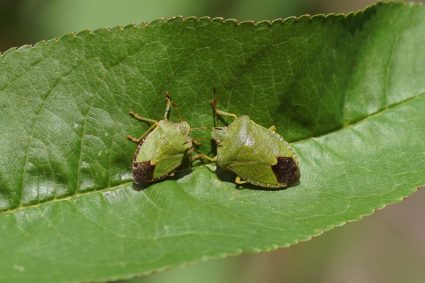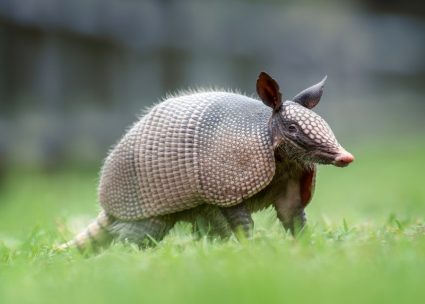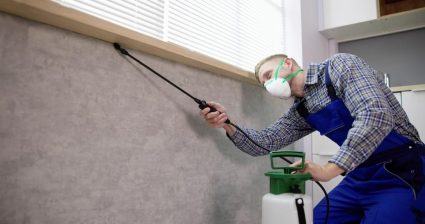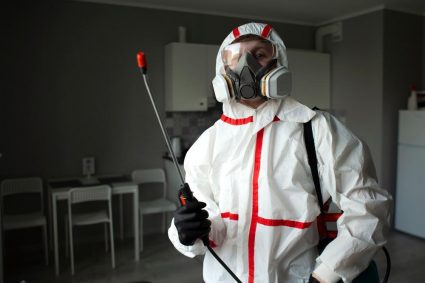
Stink bugs, with their shield-like shape and infamous odor, are a common household pest that many homeowners around the world encounter. The brown marmorated stink bug, an invasive species in the United States, is particularly notorious for its habit of invading homes. But how exactly do these bugs get inside, and what can you do to prevent them? Let’s dive in.
Stink bugs typically enter homes seeking warmth and shelter as temperatures drop. They are attracted to light and food sources such as fruits, trees, shrubs, and weeds. They gain access through small openings, cracks, or holes in the house, including gaps in foundations, window and door frames, attics, and underneath siding. Houses near agricultural fields, fruit orchards, or large gardens are particularly susceptible.
What Are Stink Bugs?
Stink bugs belong to the family Pentatomidae, known for their ability to release a foul-smelling odor when threatened. Originating from Asia, the brown marmorated stink bug has become an invasive species in the United States and other parts of the world, causing significant damage to fruit and vegetable crops.
Stink bugs are often found in gardens, farms, and orchards but can also become a nuisance in residential areas. In warm climates, they reproduce throughout the year. However, as temperatures drop, they seek shelter and warmth inside homes, leading to infestations.
How Do Stink Bugs Enter a House?
Stink bugs usually enter homes through small openings, cracks, and holes. They are attracted to bright lights and warm, west-facing walls, making houses an appealing shelter. Common entry points include gaps in foundations, window and door frames, attics, and underneath siding.
They are also known to gather on warm walls and houses located near agricultural fields, fruit orchards, or large gardens. Therefore, if your home is located near such areas, you may have a higher risk of stink bug infestation.
What Attracts Stink Bugs to a House?
Stink bugs are attracted to homes for several reasons:
- Warmth and Shelter: As temperatures drop, stink bugs seek warmth and shelter within homes.
- Light: Stink bugs are attracted to light, making homes with exterior lighting or visible indoor lighting more appealing to them.
- Food Sources: Stink bugs feed on fruits, trees, shrubs, and weeds. If your home has a garden or is near agricultural fields or orchards, it can attract stink bugs.
Signs of a Stink Bug Infestation
Signs of a stink bug infestation can include large numbers of live or dead stink bugs, an unpleasant smell, damaged houseplants, bug trails and stains, and damaged fruits and vegetables. If you notice these signs, it’s crucial to act quickly to control the infestation.
How to Get Rid of Stink Bugs
Once stink bugs are in your house, you can use methods such as using a vacuum cleaner to suck up the bugs, creating a DIY trap using an aluminum baking pan filled with soapy water, spraying stink bugs with a mixture of hot water, mild dish soap, and lavender oil, or using a homemade garlic spray.
Remember not to squish stink bugs, as this will release their unpleasant odor. Instead, use these methods to remove them from your home without causing a stink.
Preventing Stink Bugs from Entering Your Home
To prevent stink bugs from entering your home, seal cracks and gaps, repair or replace damaged screens on windows and doors, turn off exterior lights at night, use natural repellents like essential oils, and keep your yard clean. If necessary, consider using professional-grade pesticides specifically designed for stink bugs.
When to Consider Professional Pest Control
If the infestation becomes overwhelming or persists despite your best efforts, professional pest control may be necessary. Companies like Orkin and Terminix offer personalized approaches that are often the fastest and most effective way to solve a stink bug problem.
Health Risks Associated with Stink Bugs
While stink bugs do not bite, sting, or spread diseases, they can pose some health risks, especially for individuals who are sensitive to their odor or defensive chemicals. These health risks include allergic reactions, dermatitis, and irritant contact keratitis.
In conclusion, while stink bugs can be a nuisance, understanding how they enter homes and taking preventative measures can help keep them at bay. Whether it’s sealing cracks, turning off lights, or seeking professional help, there are various ways to prevent and deal with a stink bug infestation.
Frequently Asked Questions
What time of the year are stink bugs most likely to invade homes?
Stink bugs are most likely to invade homes in the fall as temperatures begin to drop. They seek warm and sheltered places to overwinter, making homes an ideal location.
Are there any natural predators of stink bugs?
Yes, stink bugs do have natural predators. These include birds, spiders, and some types of wasps. However, in areas where the brown marmorated stink bug is an invasive species, such as in the United States, they have fewer natural predators.
Can stink bugs fly?
Yes, stink bugs can fly. They have wings and are capable of flying short distances, which can aid them in finding food and shelter.
What is the lifespan of a stink bug?
The lifespan of a stink bug can vary depending on the species and environmental conditions, but on average, they live for about 6 to 8 months.
How many eggs does a female stink bug lay?
A female stink bug can lay hundreds of eggs in her lifetime. These eggs are usually laid in clusters on the underside of leaves or other sheltered areas.










